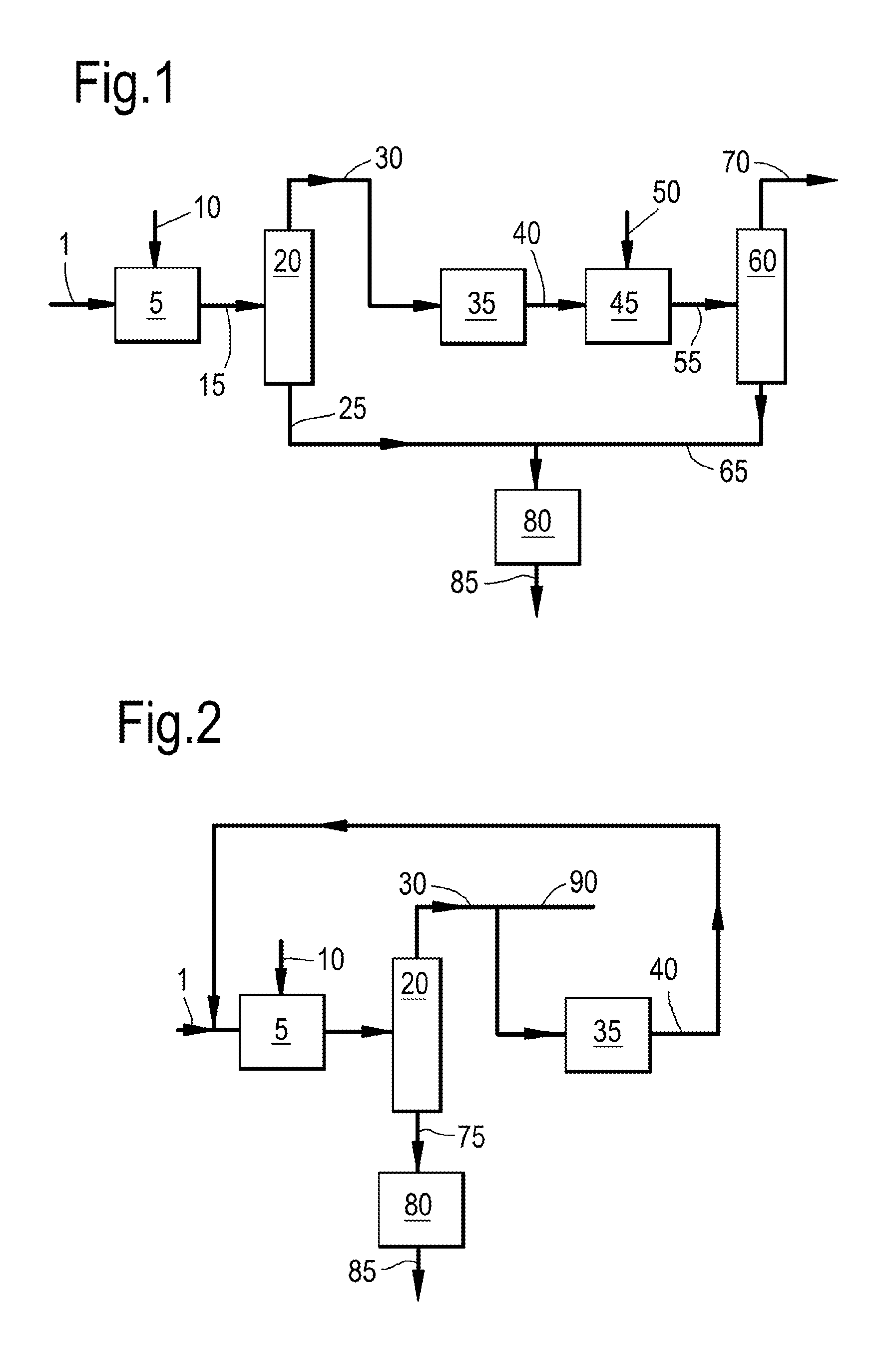Process for preparing ethylene and/or propylene
a technology of ethylene and propylene, which is applied in the field of process for preparing ethylene and/or propylene, and achieves the effect of reducing the amount of paraffin
- Summary
- Abstract
- Description
- Claims
- Application Information
AI Technical Summary
Benefits of technology
Problems solved by technology
Method used
Image
Examples
example 1
[0093]Several molecular sieves were tested to show their ability to convert MTBE to an olefinic product. To test the molecular sieves for catalytic performance, a powder of the respective molecular sieves was pressed into tablets and the tablets were broken into pieces and sieved. MTBE was reacted over the catalysts which were tested to determine their selectivity towards olefins, mainly ethylene and propylene from oxygenates. For the catalytic testing, the sieve fraction of 40-80 mesh was used. Prior to reaction, the molecular sieves were treated ex-situ in air at 550° C. for 2 hours.
[0094]The reaction was performed using a quartz reactor tube of 1.8 mm internal diameter. The molecular sieve samples were heated in nitrogen to the reaction temperature and a mixture consisting of 6 vol % MTBE balanced in N2 was passed over the catalyst at atmospheric pressure (1 bar). The Gas Hourly Space Velocity (GHSV) is determined by the total gas flow over the zeolite weight per unit time (ml.gz...
example 2
[0100]Several molecular sieves were tested to show their ability to convert a mixture of MTBE and methanol to an olefinic product. To test the molecular sieves for catalytic performance, a powder of the respective molecular sieves was pressed into tablets and the tablets were broken into pieces and sieved. A mixture of MTBE and methanol was reacted over the catalysts which were tested to determine their selectivity towards olefins, mainly ethylene and propylene from oxygenates. For the catalytic testing, the sieve fraction of 40-80 mesh was used. Prior to reaction, the molecular sieves were treated ex-situ in air at 550° C. for 2 hours.
[0101]The reaction was performed using a quartz reactor tube of 1.8 mm internal diameter. The molecular sieve samples were heated in nitrogen to 525° C. and a mixture consisting of 3 vol % MTBE and 3 vol % methanol, balanced in N2 was passed over the catalyst at atmospheric pressure (1 bar). The Gas Hourly Space Velocity (GHSV) is determined by the to...
PUM
| Property | Measurement | Unit |
|---|---|---|
| temperature | aaaaa | aaaaa |
| temperature | aaaaa | aaaaa |
| temperature | aaaaa | aaaaa |
Abstract
Description
Claims
Application Information
 Login to View More
Login to View More - R&D
- Intellectual Property
- Life Sciences
- Materials
- Tech Scout
- Unparalleled Data Quality
- Higher Quality Content
- 60% Fewer Hallucinations
Browse by: Latest US Patents, China's latest patents, Technical Efficacy Thesaurus, Application Domain, Technology Topic, Popular Technical Reports.
© 2025 PatSnap. All rights reserved.Legal|Privacy policy|Modern Slavery Act Transparency Statement|Sitemap|About US| Contact US: help@patsnap.com

